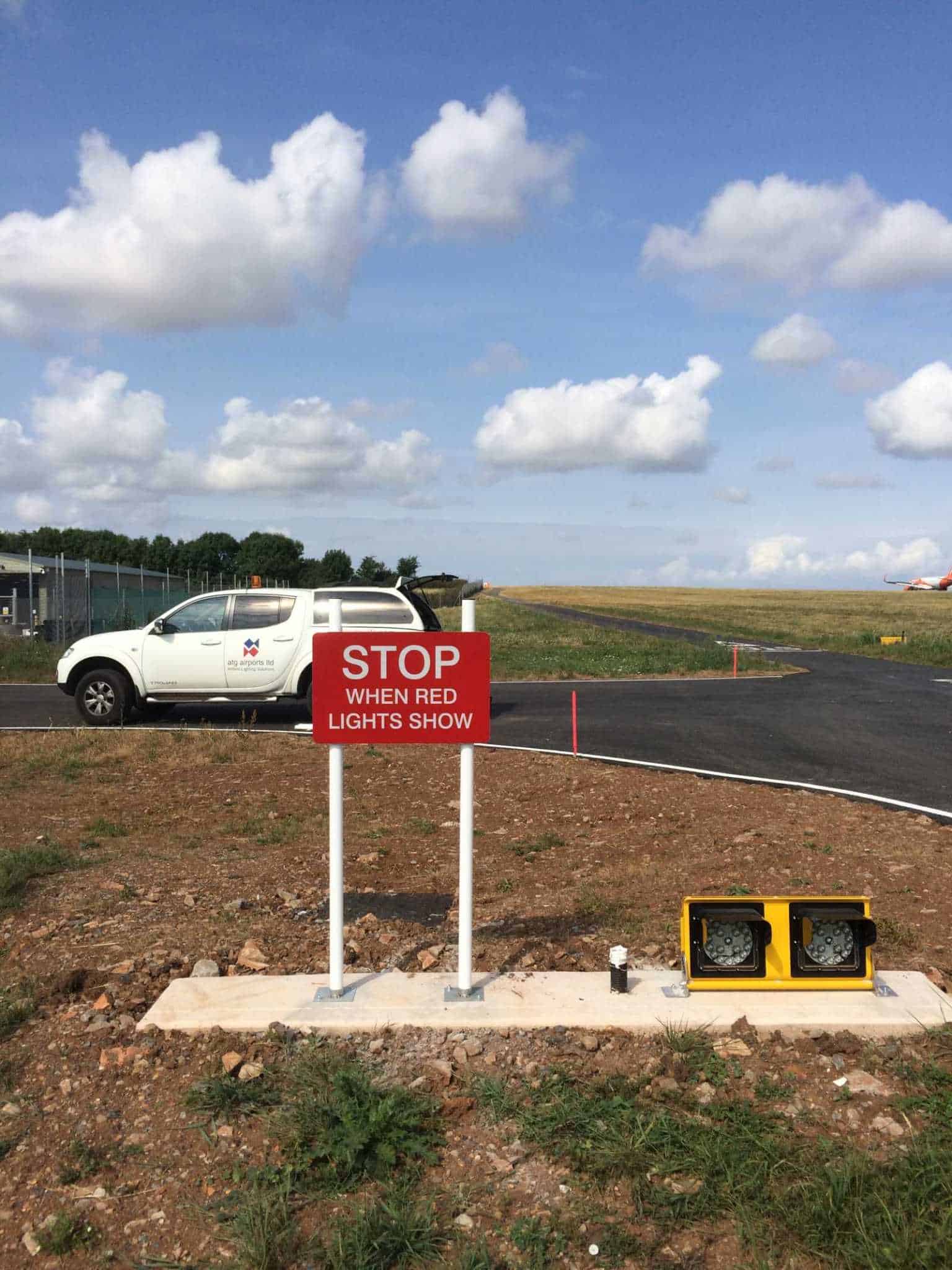Bristol Airport Signs project
Bristol Airport Signs project
Bristol Airport is committed to developing in a sustainable manner, and helping to control the adverse effects of its operations by minimising their impact on the environment. There are many ways in which an airport can tackle the project, and one focus is the power requirements for the runway and taxiway operations. The airfield lighting meets with the requirements for CAT III operations, and the advances made in lighting know-how is now at a point where the required light output for the runway fixtures can be achieved using the latest LED technology.
Having rewired the airfield lighting circuits previously, it was the choice of the airport, based on the exceptional service provided on this and several other projects, to contract atg airports to supply and install new LED lighting equipment. The scope of works on this phase, was limited to the replacement of a number of mandatory signs, taxiway guidance signs along with runway guard lights.
The installation work was completed during daytime operations, over a several day period. With the taxiways still active, it was essential that close coordination between the airside operations and atg airports installation team was achieved. Strict time slots were given for work to be completed, and therefore it was key that the teams were fully prepared in advance, in readiness to complete the phase of work required.
On completion of the installation of IR858I taxiway signs, and Apollo runway guard lights, a complete inspection of the new cable joints, transformers and connections made was conducted by the site supervisor and project manager. This was then followed with circuit continuity checks to ensure that the required electrical standards were achieved. The services were then operated manually and then from the control position in the tower, to ensure all equipment was functioning correctly before being handed over to the airport and put into service.


